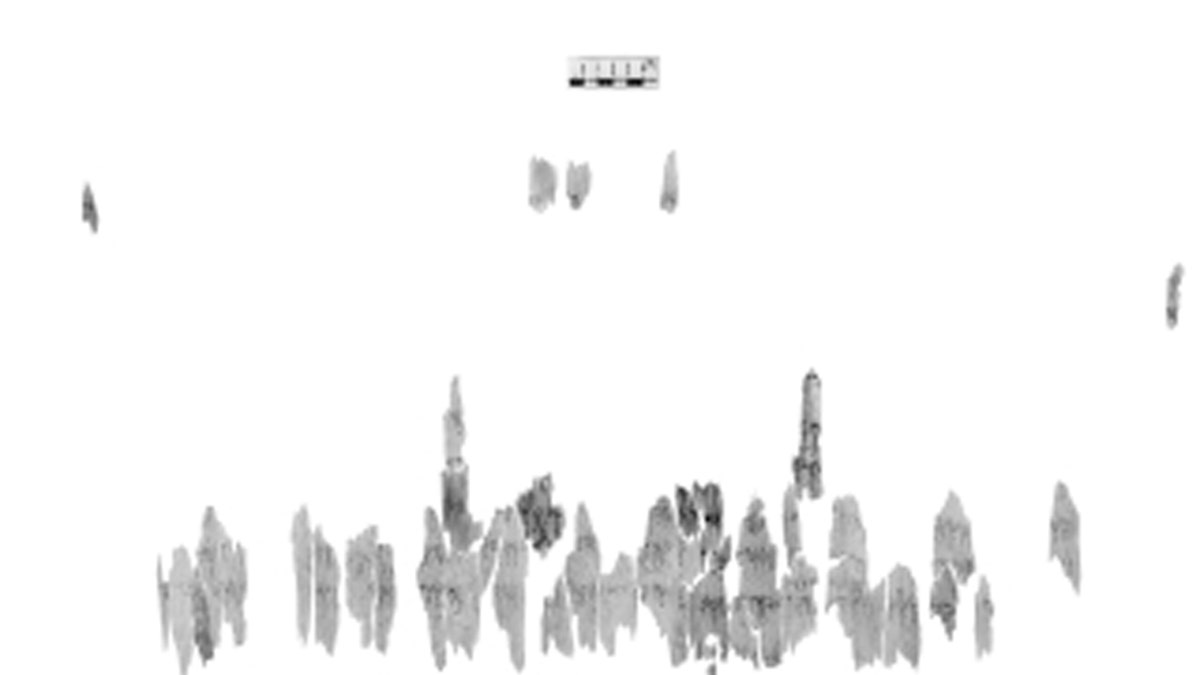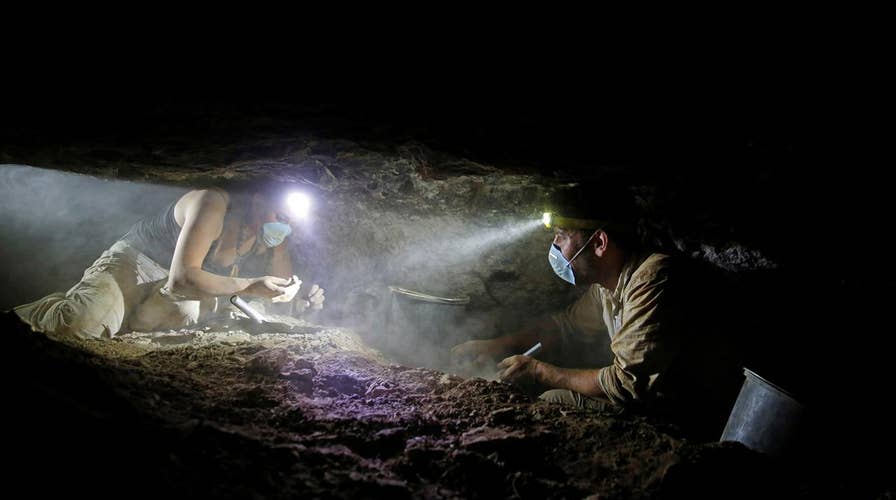Obscure Dead Sea Scrolls fragments deciphered
One of the last two parts of the Dead Sea Scrolls has finally been translated, thanks to researchers at the University of Haifa.
One of the last two parts of the Dead Sea Scrolls has finally been translated, thanks to researchers at the University of Haifa.
Dr. Eshbal Ratson and Prof. Jonathan Ben-Dov of the Department of Bible Studies managed to put together 60 tiny fragments over more than a year, obtaining fresh insight into a festival that marked the changing of the seasons.
First discovered in a cave in Qumran in 1947, there are 900 scrolls which make up the Dead Sea Scrolls; together, the collection is considered to be the oldest copy of the Bible in known existence, thought to have been created around the 4th century B.C.
The majority of the scrolls were discovered between 1947 and 1956, and have since been restored and published.

The fragment deciphered by Dr Eshbal Ratson and Prof Jonathan Ben-Dov of Haifa University. (UNIVERSITY OF HAIFA)
TROVE OF LOST JEWISH ARTIFACTS, THOUGHT TO HAVE BEEN DESTROYED IN THE HOLOCAUST, DISCOVERED
Also included in the newly discovered fragment is a part that deals with the 364-day calendar, celebrated by the ancient Judean Desert sect. It's unclear who created the Dead Sea Scrolls, but some researchers have suggested a group known as the Essenes are responsible. The Essenes existed from the 2nd century B.C. to the 1st century A.D.
The festivals that were used to celebrate the changing of seasons include the festival of New Wheat, New Wine and New Oil, related to the Jewish festival of Shavuot. According to the calendar, the wheat festival took place 50 days after the Shabbat that followed Passover. Fifty days later, the wine harvest festival came and 50 days after that was the oil harvest festival.
The scroll also said there was a special day for the changing of the seasons, known as Tekufah, which in Hebrew translates to "period."
“This term is familiar from the later Rabbinical literature and from mosaics dating to the Talmudic period, and we could have assumed that it would also be used with this meaning in the scrolls, but this is the first time it has been revealed,” Dr. Ratson and Prof. Ben-Dov explained in a press release.
ANCIENT FORBIDDEN CHRISTIAN TEXT OF JESUS' 'SECRET TEACHINGS' TO HIS 'BROTHER' FOUND
“The lunar calendar, which Judaism follows to this day, requires a large number of human decisions," the researchers added. "People must look at the stars and moon and report on their observations, and someone must be empowered to decide on the new month and the application of leap years. By contrast, the 364-day calendar was perfect. Because this number can be divided into four and seven, special occasions always fall on the same day," they wrote.
Interestingly enough, Dr. Ratson and Prof. Ben-Dov were able to decipher the code from annotations made in the margins, by correcting omissions from the original author.
"What's nice is that these comments were hints that helped me figure out the puzzle — they showed me how to assemble the scroll," Dr. Ratzon said in an interview with Haaretz.
Follow Chris Ciaccia on Twitter @Chris_Ciaccia





















